Dendrobium nobile orchid: description and cultivation features
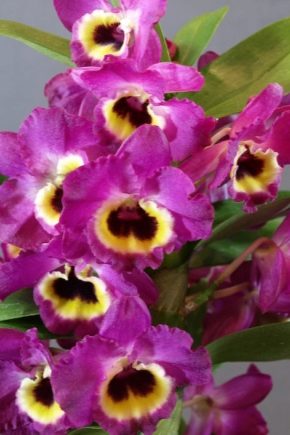
Dendrobium is one of the largest orchid genera and includes Nobil, which has become the most commonly grown hybrid. This flower is known under various names, is popular not only as an ornamental plant, but also as a healing ingredient.
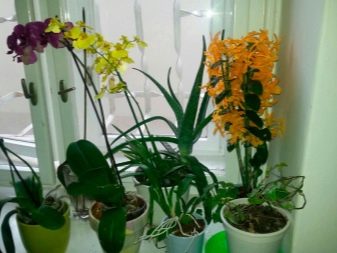
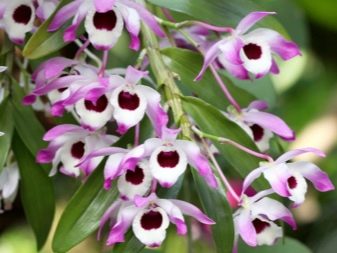
Description
History shows that dendrobium nobile, also known as noble dendrobium, was used for medicinal purposes about 2,000 years ago. This is evidenced by the corresponding entry in the "Herbal Classics Shen Nong", which was written in the years 2300-2780. It is a rare and precious Chinese herb, the main medicinal part of which is the stem. It usually grows on perpendicular rocks.
Dendrobium nobile is a perennial herb. Stems are slightly flat and curved at the top, 10 to 60 cm high, up to 1.3 cm thick, with a narrow base. The leaves are sublimated, oblong or elliptical, 6 to 12 cm long, 1 to 3 cm wide, with two lobes at the top.
During the flowering period, the orchid stands without foliage. The brushes have from 1 to 4 flowers, they are large in size, up to 8 cm in diameter, there are white tepals with a light purple tint and a purple apex. The anther of the flower has two compartments and a pollen block. Flowering time is from April to July. There are about 1000 species of this species in the world and about 76 species in China. The plant is native to tropical and subtropical Asia, Australia and the Pacific Islands.
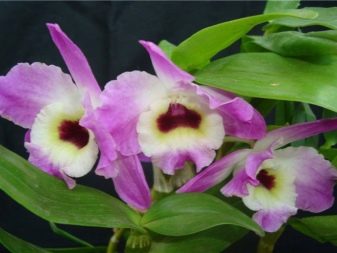
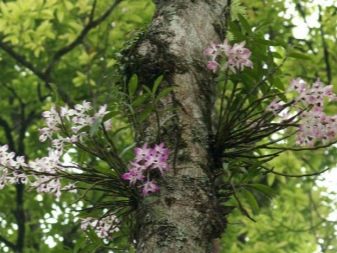
Nobile hybrids are deciduous, which means they lose some or all of their leaves in winter. This dormant period lasts about two to three months. There is no need to water or feed the plant during this time. The most popular type of nobile is Yamamoto. These orchids can easily have 40 or 50 flowers per plant, and the flowering process takes up to 3 weeks. They come in a variety of shades, with the most popular being pink, yellow, and white.
Dendrobium orchids grow naturally in a variety of ecosystems, from warm rainforests to cold Himalayan mountains and dry Australian deserts. They are epiphytic, that is, they live on trees, lithophytic (living in rocks) or terrestrial.
Given the fact that they live in so many different biomes, this species is one of the most diverse.
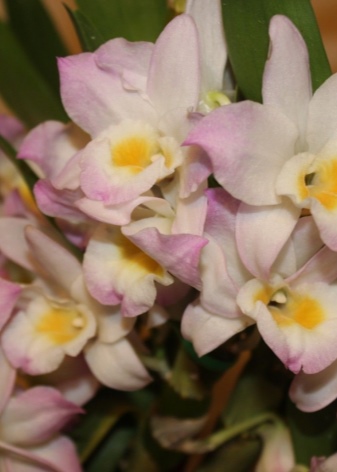
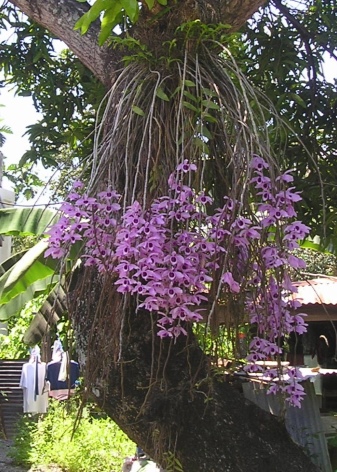
Nowadays, it is quite possible to find dendrobium nobile in India, Japan, the Philippines, Malaysia, Papua New Guinea, the Polynesian Islands, Australia and New Zealand. However, they are excellently grown in other areas as well. Many varieties are tropical, some prefer intermediate conditions, others thrive well in cooler climates. The only thing that unites them all is the love of light.
Orchids vary in size, with certain varieties being smaller than a matchbox, others large, and the most interesting specimens are over 1 meter in length. They require good light and ventilation in the room. There are deciduous varieties and evergreens. Some have pseudobulbs, while others have just stems that resemble canes.
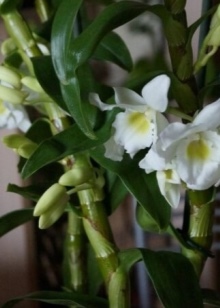
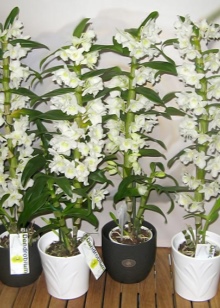

Varieties
The flowers of the varieties of the described orchid offer a wide range of shades: yellow, orange, red, pink, bicolor and many others.Heat-loving species at maturity reach a height of up to 5 cm, such dwarf plants are very attractive as a decorative design in the room.
They do well in trees, but dendrobium nobile can be successfully grown in both small pots and tree ferns. Such plants are well known for their abundance of flowers in spring. For active growth, the plant must always have water. It is also necessary to regularly feed it with a weak solution of a complex fertilizer for an orchid.
The Nobile variety is also suitable for intermediate climates, since it comes from the mountainous regions of Asia, more specifically from the Himalayas. Oddly enough, this species was popularized in Hawaii and Japan. Even stranger, old stems can also produce flowers in the future. In late spring and throughout the summer, the orchid, especially the Yamamoto Dendrobium, shows a surge in growth.

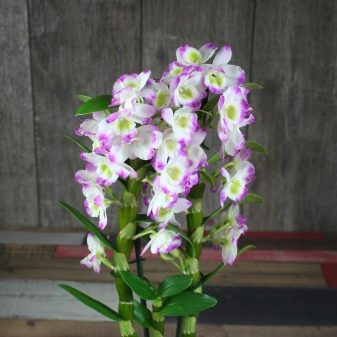
Of the varieties that exist today, the following subspecies can be distinguished.
- "Apollo". A hybrid that has a fleshy stem and dense, deep green leaves that do not fall off over time. During flowering, several flowers on one peduncle spread a pleasant aroma. The shade is white, the pharynx is yellow. The plant blooms for 12 weeks only once a year.
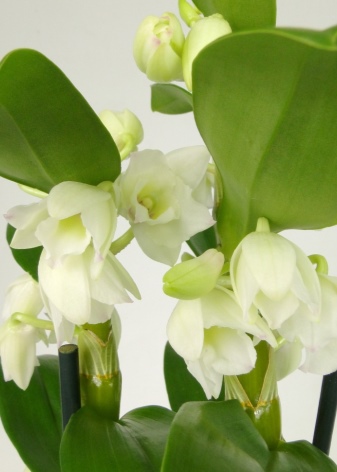
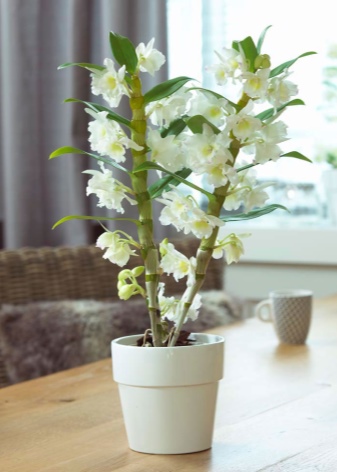
- Akatsuki... Pleases with lilac flowers with blue edging. The maximum flower size is 4 centimeters. The scent can vary in intensity and is stronger at the beginning of the day.
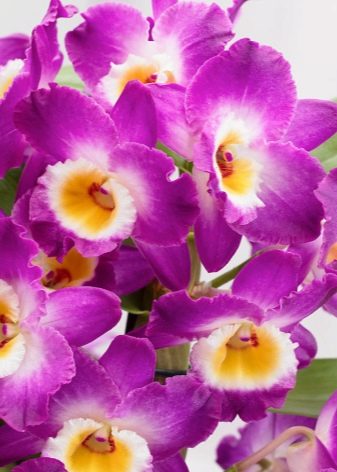
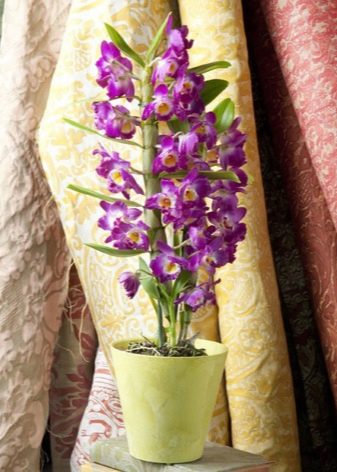
- "Stardust". It has a thin and long pseudobulb, up to 2 centimeters wide. The flowers can be either red-orange or pale yellow, about six centimeters in diameter.
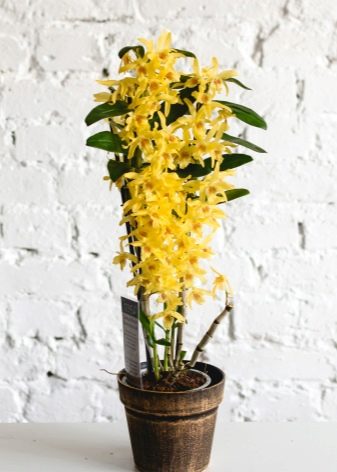
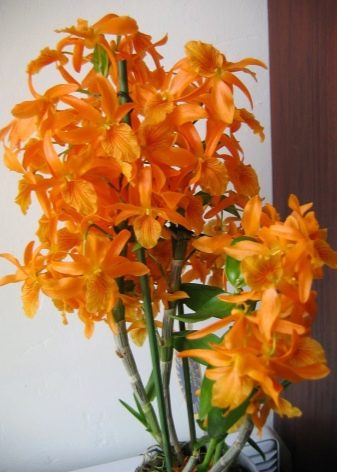
- Kinga. In its natural environment, it grows on steep cliffs. The stems are covered with white scales, their length can reach 30 centimeters. The plant has long leaves, while they are quite narrow. Up to seven flowers can form on one peduncle, which will delight you with white color with a pink or purple tint.
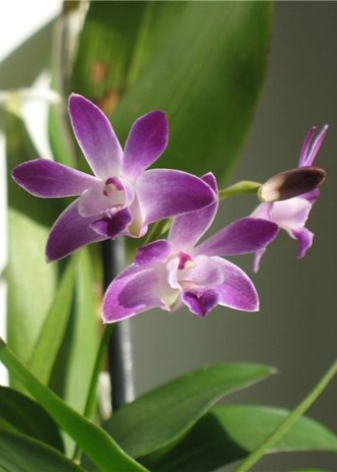
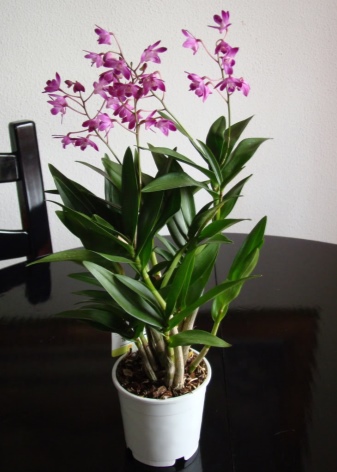
- Berry. A bush-shaped hybrid that continues to bloom from spring to early winter. Flowers can be of different shades, sometimes they are light crimson, and sometimes they are bright crimson.
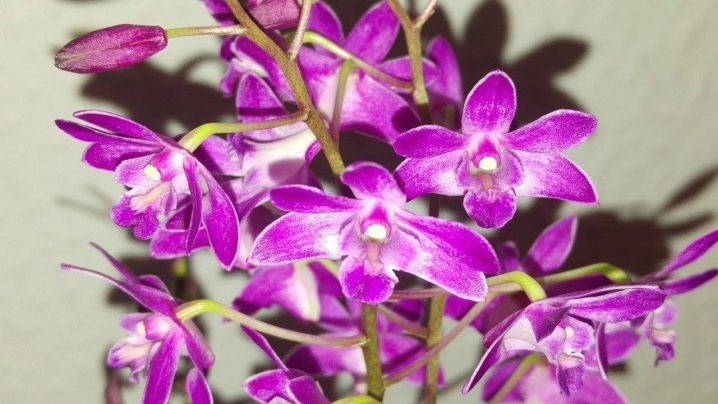
- "Aggregatum". It has pseudobulbs with yellow furrows. A maximum of 15 flowers are formed on each inflorescence. The aroma is amazing, very reminiscent of honey.

- "Hibiki". A beautiful orchid with pink inflorescences and an orange throat.
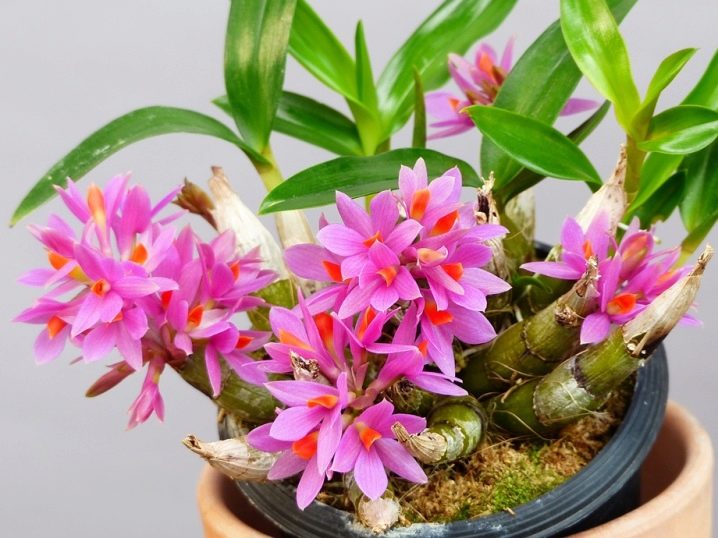
Home care
To plant or replant an orchid after it has faded, it is worth using a special soil that is sold in packages. If desired, it is possible to prepare the mixture on your own, if there is a pine forest nearby. The fact is that the basis of such a soil is pieces of pine bark, which is first boiled, then dried. This allows the fungus and other infections to be removed.
After that, pieces of charcoal are added, which helps protect against acidification of the soil during frequent watering. Some growers put fern root, which is crushed before that. If not, wine bottle cork or coconut fiber is an excellent alternative. If it is supposed to put the plants on the south side, where there is most of the light, then it is worth adding sphagnum moss to the soil, which will help to retain moisture. It is not uncommon to see chunks of Styrofoam added when the orchid is on the north side to loosen the soil a little. It will always be helpful to add a small amount of peat.
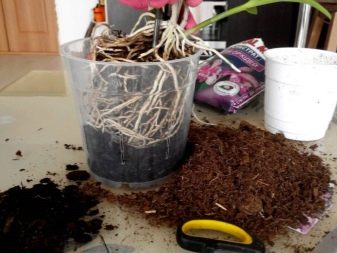
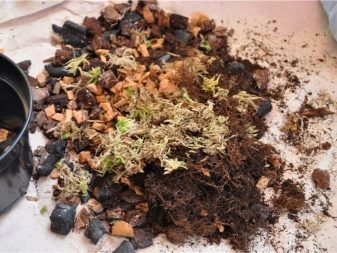
Typically, this variety has quite heavy stems, so it is better to additionally use props. In the fall, when the temperature begins to drop, it is necessary to apply a maximum of potash fertilizers, and place the plant itself in a dry greenhouse or bring it home if it was previously on the street. It is advisable not to put on a windowsill, as cold can come from it.
If dendrobium nobile is watered at this stage, it will begin its natural growth cycle and the small buds will develop into small shoots.
Thus, if you want to get a strong plant with abundant flowering next year, you should refrain from watering for now. You must wait until the flowers open.

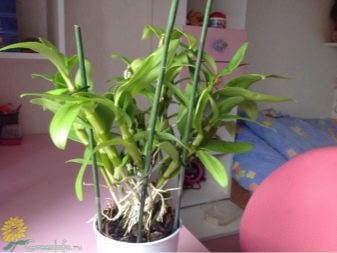
Very important when growing dendrobium nobile is bright light, which in turn maximizes flower production. In this case, it is advisable to exclude direct sunlight from entering the surface of the plant, they should penetrate into the room scattered. This group of orchids prefers temperatures between 14 and 26 ° C, that is, between 58 and 79 ° Fahrenheit. Failure to comply with the requirements leads to a change in the state of the flower; when it is lowered, it may simply die.
When new growth begins in the spring, the orchid needs more watering and more fertilization. It is worth feeding the flower every 2 weeks during the growing season. In the fall, orchid needs change dramatically. The buds will appear when the temperature gets cooler at night and the growths are fully ripe. This usually happens by the middle of winter.
If you take proper care of the flower, then it will delight you with beautiful and large flowers.
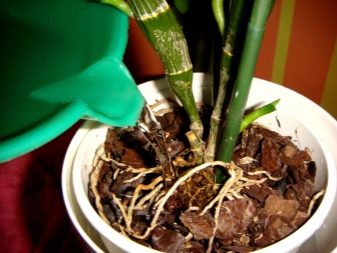

How to make it bloom?
It so happens that the plant does not always bloom, sometimes you have to work hard to achieve this. Let's look at general tips for growing an orchid.
- When the plant is grown at home, it is recommended to take it outside in the fall to benefit from the cold temperatures at night. The flower should then be placed in a relatively cool place, such as an unheated room or a closed porch, until buds begin to form.
- Dendrobium is one of the few orchid species that bloom from both old pseudobulbs and a new sprout.
- The warmer it is in the room where the flower grows, the longer it can bloom.
- To maintain the flowering process, it is necessary to use temperature drops, so you can make the orchid delight the eye throughout the year.
- It is important that the plant is transplanted as soon as possible after the flowering period.

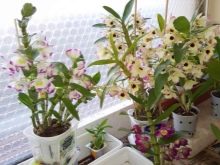

Transfer
After purchase, most growers prefer to transplant the orchid into a new container. It is important to know that you cannot apply top dressing a month before this, and you will also need to reduce the frequency of watering. The described variety likes to be in cramped conditions, therefore it takes root well in small pots. Clay ones are great, as long as there is drainage. Some growers use long fibers of sphagnum moss for orchids.
It must be remembered that frequent transplanting does not benefit this plant. Moreover, in some conditions, the orchid may not tolerate such changes well. Immediately after the purchase, you should not rush to change the "place of residence", you must definitely wait for spring. The subsequent transplant is made only after three years and not earlier.
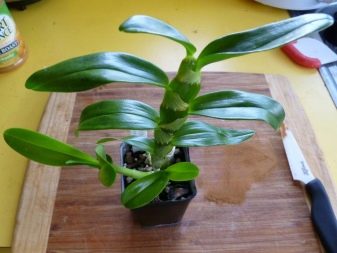
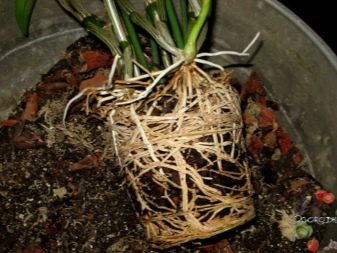
The gap between the walls of the planting container and the roots should not exceed two centimeters. The procedure is carried out only after the end of the flowering period and only if:
- the substrate used has become like dust;
- the roots cannot catch on to the ground, so it is difficult for them to hold the stem during flowering;
- the roots have grown so much that they began to displace the soil or stick out from under it;
- brown spots appeared on the roots, respectively, the soil became saline.
Choosing a new transplant capacity is high so that good drainage can be made. Large sterile stones are placed on the bottom, a few are enough. It is to them that the roots will cling. Ideally, the new container should be two centimeters larger than the old one.Some people use expanded clay as drainage, but in this case it cannot be used, since there is calcium in the composition, and it spoils the quality of the soil.
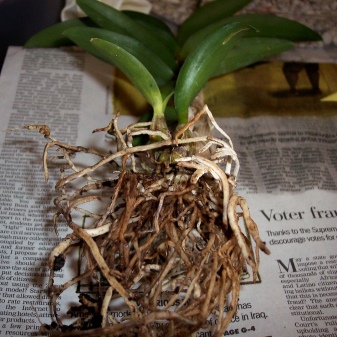
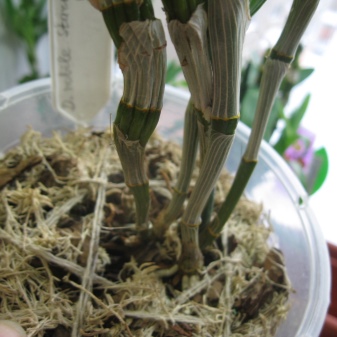
Reproduction
An orchid can be propagated both by children and by cuttings. In addition, it reproduces well by division and with the help of a pseudobulb.
Children
The easiest and most recommended method for novice growers is with the use of children. The flower shows when the pseudobulb does not give the expected flower, but a rosette, which subsequently forms an independent root system. It should form and reach a certain size, the best time for planting is when the roots are already from 3 centimeters long.
The rosette is carefully cut with a clean knife, and the cut is processed using a charcoal solution. They are planted in already prepared soil, you can cover it with polyethylene to create a greenhouse effect. As a rule, there are no rooting problems.
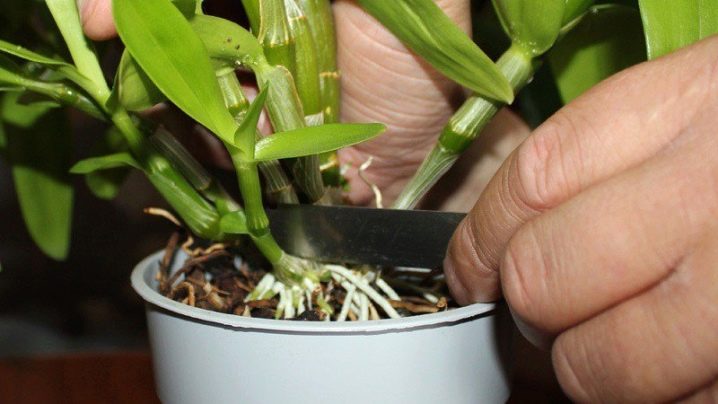
Pseudobulb
The second simple way is to use a pseudobulb for propagation, on which there are no leaves. It will need to be divided into several parts, a prerequisite for successful germination is the presence of three buds on each in the dormant stage. The cut site is also processed, but crushed activated carbon can also be used.
For planting, a container is prepared in which sphagnum moss is placed, which will act as a substrate. The cuttings are placed inside and covered with a lid, but before that, the moss must be moistened with a spray bottle. The containers are placed in a sunny place, but so that the light is diffused, and the temperature is at least 22 degrees. While the roots are sprouting, you will need to ventilate and moisturize the cuttings. After three weeks, roots will appear, when they reach a length of 5 centimeters, they can be planted in the ground.
Young pseudobulbs are also suitable for breeding, but the method is rarely used, as it takes a lot of time and effort, and is not always successful. Its only advantage is that several orchids can be obtained from one such cutting at once.
At the first stage, you will need to cut a pseudobulb from the bush with a clean tool, then put it in a container with wet moss. The germination process is the same as with cuttings, after a month new orchids will appear, which are transplanted only when the roots reach a length of 5 centimeters.
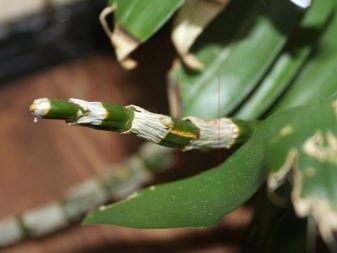

By dividing
The method of reproduction by dividing the bush looks more complicated, since the flower must be adult, healthy and have several processes. It is desirable that there are old pseudobulbs on the site to be taken away. The flower is removed from the container and the roots are cleaned from the ground, then the root is cut off and the now two orchids are moved to different pots.
Before carrying out the procedure, the bush must be watered well.
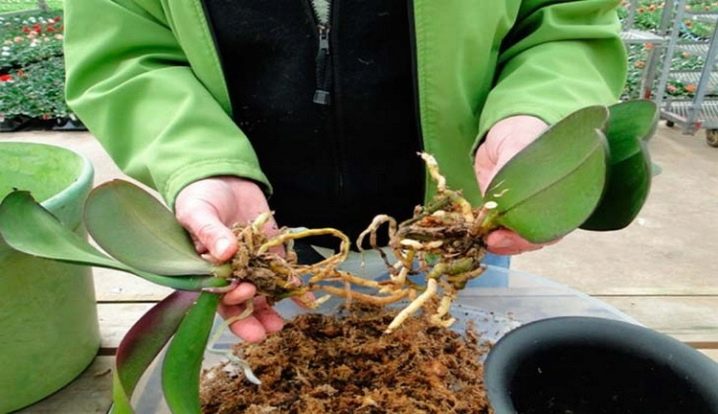
Diseases and pests
Any plant grown in poor conditions can fall prey to insects or disease, and orchids are no exception. There are many large insects that can eat leaves and flowers, and you can use Carbaril or Diazinon to fight them.
Some experts advise spraying plants with regular or methyl alcohol. Aphids and most other pests can be removed with soapy water or simply by increasing the humidity.
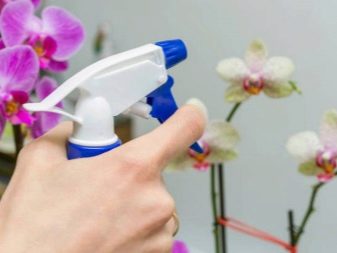
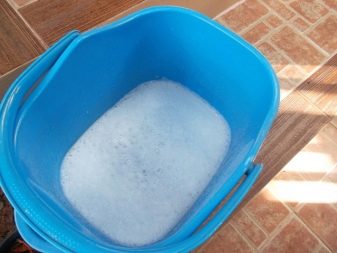
Among the most common pests, such insects can be distinguished.
- Mealy mites. Slow insects that appear white bloom. They tend to hide in crevices, and even in flowers.
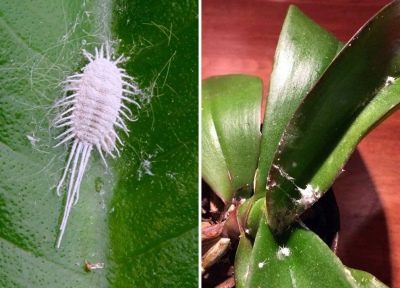
- Aphid. Often reproduces in large numbers in buds, flowers and soft new growths. It is easy to get rid of with insecticides, including Malathion and Mavrik. The presence of this insect is particularly undesirable because it additionally carries viruses.
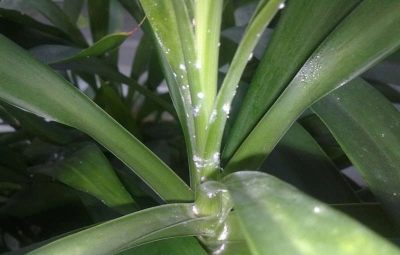
- Thrips. Small, fast moving insects that damage the surface of leaves and flowers as they suck sap from them. They leave silvery marks.
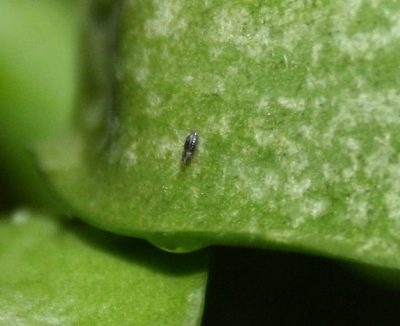
- Mushroom gnats. The larvae live in pots, especially in an organic mixture, where they lay eggs, feed on the roots. Fungus midges bring in bacterial and fungal root rot. The plant withers, has distorted leaves. An excessively wet mixture and shade are favorable conditions for development, often the larvae are introduced through peat. Garden oil will help to cope with adults.
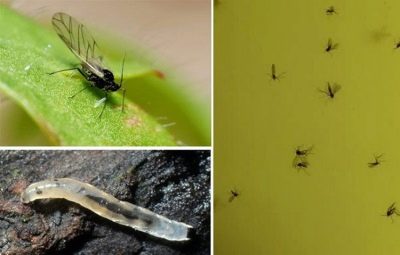
- Whitefly. Does not fly, but attaches to the bottom of the leaves, with eggs laid in a small circle. Lesions include wilted leaves with mold or sticky patches. For prevention, you need to reduce the amount of nitrogen fertilizer, you can spray it with insecticidal soap or pyrethrin.
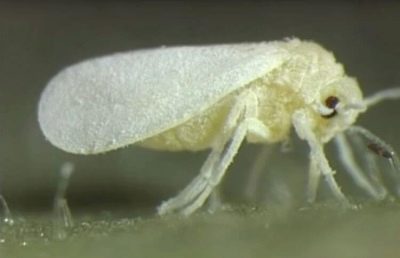
- Spider mite. The most serious pest of the orchid, as it is the most insidious. The creatures are so small that it is difficult to see them, the first sign is a silvery coating on the foliage from the underside, which then turns brown. Pesticides are a sure-fire remedy.
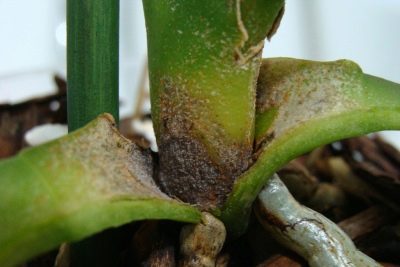
If the leaves of a plant turn yellow, it sheds them or the roots have rotted, this is a sign of a fungal infection. There are many spraying chemicals used for healing purposes. Some fungicides can also provide excellent plant protection. Consider a few of the tools suggested by gardeners.
- "Captan". A prophylactic drug that is effective against a wide range of fungal diseases.
- "Mancozeb"... Another, no less effective remedy.
- Benomil. Systemic fungicide, it should not be used regularly, only as a last resort. Not effective against phytophthora or pythias.
- "Alett". Absorbed by leaves and roots, it helps provide long-term protection against late blight and pythias. Has a healing effect.
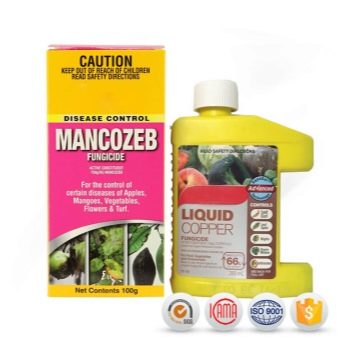

For information on how to care for the dendrobium nobile orchid, see the next video.


























The comment was sent successfully.